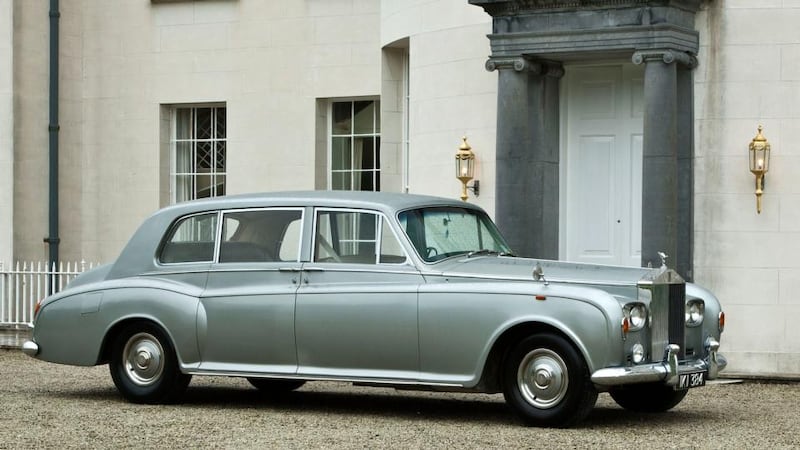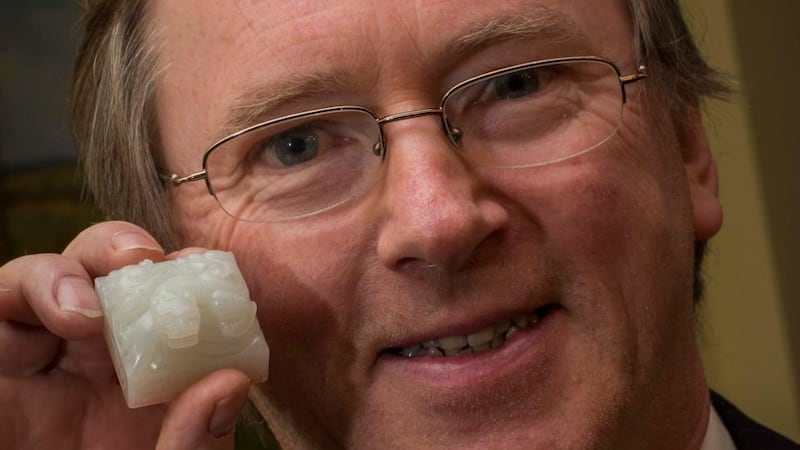The Irish fine art and antiques market was worth an estimated €50 million last year. That’s a drop of about 50 per cent since the peak of the boom and prices, especially for modern art and antique furniture, have fallen sharply since the crash of 2008.
But despite ongoing economic turmoil and austerity, the market is proving to be defiantly resilient. None of the big auction houses have gone out of business and, surprisingly, new entrants have even joined the market. Overall, sales volumes appear to be holding up, albeit at much reduced prices, with auctioneers regularly reporting up to 80 per cent of lots sold.
Ironically, the banking crisis and the visceral fear of a Cyprus-style raid on savings accounts of more than €100,000, may be of benefit to the market. James O'Halloran, managing director of Adam's, the country's biggest fine art and antiques auctioneers, said many buyers were people with "money on deposit" deciding to use some of the cash to buy an item of beauty and value rather than put up with poor interest rates. According to Ian Whyte, managing director of Whyte's auctioneers, low [deposit] interest rates and the lack of confidence in property and the stock market means "the art market will benefit from those seeking a tangible asset of enduring beauty and value".


Fine art and antiques are sold through galleries, specialist shops and fairs but the traditional, most transparent and still most popular outlet is through public auction.
The big three Dublin auctioneers, Adam's, de Veres and Whyte's, are holding auctions as frequently as during the Tiger years. Dublin's big jewellery auctioneers, O'Reilly's in Francis Street and John Weldon Auctioneers in Temple Bar, report continuing strong demand for antique jewellery, silver and collectible watches .
Bonhams has opened a Dublin office, complementing the existing presence in Ireland of the other major international auctioneers, Christie's and Sotheby's.
New venues
New venues include the Limerick Auction Rooms; the Ashgrove Auction Rooms in Naas, Co Kildare; and a salesroom on Capel Street opened by Damien Matthews, an auctioneer based in Oldcastle, Co Meath. Long-established firms, Herman and Wilkinson of Rathmines and Adams Blackrock, in south Co Dublin, have both undertaken major saleroom refurbishments. The Co Kilkenny family-run Mealy's has separated into two businesses, Fonsie Mealy Auctioneers (best known for rare book sales) and Mealy's Fine Art, and both seem to be flourishing.
West Cork art auctioneer Morgan O’Driscoll has begun holding occasional auctions in Dublin. Galway-based Dolan’s holds art auctions at locations from Connemara to Limerick. Sheppard’s of Durrow has established a strong Asian art business and now routinely attracts bidders from China and even publishes its online catalogues in Mandarin. Other family-run fine art and antiques auctioneers that have weathered the downturn and continue to trade include RJ Keighery’s in Waterford, Hegarty’s in Bandon, Mullens in Bray, Drum’s in Malahide, Victor Mee’s in Cavan, Donohoe’s in Goresbridge, Victor Mitchell’s in Roscrea, Oliver Usher’s in Kells, and Woodward’s in Cork. There are antiques shops in most big towns throughout the country and Dublin’s traditional antiques quarter in Francis Street has been rebranded and even seen some new shop openings.
At the less expensive end of the market, art and antiques fairs are held almost every weekend of the year at hotel venues throughout the country. Joan Murray of Vintage Ireland, who organises antiques fairs, says: "With low overheads, dealers at the smaller fairs can afford to sell on at a small profit, thereby keeping prices low."
Most auctioneers have also revamped their websites and the bigger companies now broadcast auctions live. Internet bidding is transforming the market with up to 20 per cent of bidders in some Irish auctions now online worldwide. Irish art and antiques are now easily accessible to overseas collectors of Irish heritage and to the rapidly expanding diaspora of more recent emigrants. Antiques dealers are also increasingly using the internet as a sales medium through sites like myantiques.ie, which is owned by The Irish Times.
Unexpected boost
Irish auctioneers are also enjoying a quite unexpected boost from a most unlikely source. Wealthy collectors in China have been snapping up examples of Chinese porcelain (imported to Ireland in large quantities during the 18th and 19th centuries) and other decorative items at auctions worldwide. Occasionally, items turn up that have an imperial connection and can fetch outlandish prices.
Remarkably, during the economic downturn new all-time auction record prices have been established.
On Wednesday, September 28th, 2011, a painting titled A Fair Day, Mayo by Jack B Yeats sold for €1 million at Adam's; the highest price ever paid at auction for a work of art in Ireland. The painting, dating from 1925, was sold by a south Dublin family who bought it 67 years earlier for £250.
In November 2012, a matchbox-sized piece of carved Chinese jade made €630,000 at Sheppard’s auction in Durrow, Co Laois – the highest price ever paid for an antique at auction in Ireland.
Earlier this year, Adam's achieved a world record price for a Paul Henry painting when The Potato Diggers sold for €400,000, some 80 years after the vendor's family bought it for £300.
While internet catalogue browsing, viewings and bidding are all on the increase, Irish people still seem to enjoy attending a good old-fashioned auction, especially if the sale also affords a glimpse into the lifestyle of a wealthy collector.
One of the most successful auctions ever held in Ireland took place last year when the contents of Mount Congreve in Waterford were sold in a joint auction hosted by Mealy's and Christie's following the death of Ambrose Congreve, the owner of the historic house. More than 13,000 people attended the viewing and the auction itself was a sell-out, demonstrating that good-quality items, of guaranteed provenance can, and do, sell, even during tough economic times.
The Mount Congreve auction was, of course, an executor's sale. But the recession is also forcing many vendors to sell art and antiques because, quite simply, they are strapped for cash. The concept of selling the family silver is a well-established tradition in aristocratic circles. However, many of today's vendors are not selling to raise funds to fix the west wing but rather to pay bills. Dublin auctioneer John Weldon has, for example, noticed an increase in women selling jewellery "to pay school fees" and some of the "trophy art" acquired during the boom is also being offloaded, some of it via Nama.
Next week in Part 4
What's selling and what's not?













